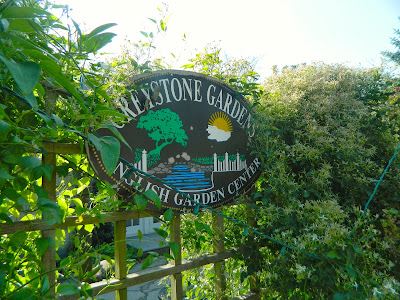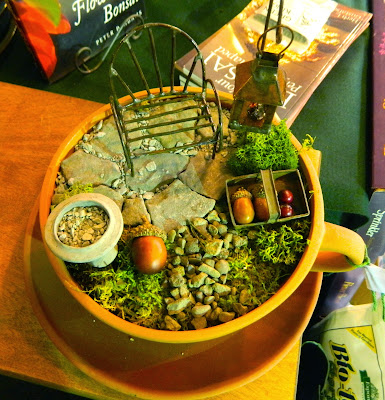 |
| Tufted Titmouse |
"Our Keystone State (Pennsylvania) is aptly named in many ways, for it's central position biologically as well as historically. Southern animals approach their northern limits here, and northern animals their southern boundaries. Beside the many species which live here all year, others migrate through or visit during severe northern winters ... We have lakes, forests, bogs, rivers, meadows, ponds and marshes. This precious diversity of habitat allows the variety of birds and mammals which add so much to our joy of living."
-- Toni Williams, PA Game Commission
While it is impossible for me to decide my favorite winter bird, the tufted titmouse is near the top of my list. The tufted titmouse is 6 inches long and slate gray in color with a white chest and belly. It has rusty brown flanks. It is most recognized by its pointed crest. I love its bold perkiness and seem to take a lot of photographs of the tufted titmouse, enough to devote a posting to this cute little fellow. I think I will do that soon.
Once very common in Pennsylvania, the bluebird has declined in numbers in the last 50 years, partly due to the lack of tree-cavity nesting spots. Encouraged by the North American Bluebird Society, my H.H. erects many bluebird nest boxes in an effort to attract them to our gardens. Suitable boxes must be the exact size to let bluebirds in and keep competitors out.
 |
| Eastern Bluebird |
Both male and female are blue with reddish throat and breast, but the male is much brighter.
 |
| Male Eastern Bluebird |
In summertime, bluebirds don't come near the back porch, but during the winter, every day they visit the heated water dish that H.H. placed there. I can't stress enough the importance of providing heated water for winter birds. For more information read 'Winter Bird Bath Tips' in the Birds and Blooms blog.
 |
| Female Eastern Bluebird |
The American goldfinch is sometimes called the 'wild canary' -- an apt name in the summer, but it loses its yellow feathers in the winter and becomes a dull olive color. Many of them move south for the winter months, but I always have a small flock that stays all winter. I think they stay for the purple coneflower seeds that I leave standing and for the Nyger Thistle that H.H. puts in the bird feeder.
 |
| American Goldfinch |
 |
| American Goldfinches |
I love the little (5 1/2 inches) Carolina wren. It is one of the few birds that will sing throughout the year. The male is known to sing up to 40 different song types. Also, they have long-term mates, remaining together throughout the year in permanent territories.
 |
| Carolina Wren |
The blue jay is a large (12 inches) bright blue and white bird with a black necklace. It's feathers don't have blue pigment; refracted sunlight casts blue light. The blue jay is not a favorite of mine as it is known to eat eggs or young birds from the nests of other birds. An interesting fact: it is one of the few birds to cache food.
 |
| Blue Jay |
The male Northern cardinal is 8 1/2 inches and all bright red with black around the base of its reddish bill. This species is named after the red robes worn by Roman Catholic cardinals. It has a large crest. The female is grayish brown with a bright red bill. They always come to the feeder in pairs and I love to see the male feeding the female during courtship. This is another bird that can be heard singing at anytime of year. While you usually see the charming English robin on British Christmas cards, the bright cardinal graces American ones.
 |
| Male Northern Cardinal |
 |
| Female Northern Cardinal |
The round, chubby dark-eyed junco is one of Pennsylvania's most common winter birds, usually seen in southern PA, but this year there are several in my northeast PA garden. They are most comfortable on the ground, 'double-scratching' with both feet to expose seeds and insects. They provide a valuable service to the gardener as the love weed seeds.
 |
| Black-eyed Junco |
The black-capped chickadee is found across the whole of North America. He is among the friendliest of back-yard birds, being very bold and inquisitive. He is around all year long, but is most noticeable in winter. He loves insects, so is a great benefit to farmers and foresters.
 |
| Black-capped Chickadee |
Three types of woodpeckers visit my garden: the pileated woodpecker which I see only in the summer, the downy woodpecker, and the red-breasted woodpecker. The sparrow-sized downy woodpecker is the most common backyard woodpecker. As you can see, he is small enough to climb right inside the suet feeder.
 |
| Downy Woodpecker |
The red-breasted woodpecker is much bigger than the downy being 9 to 10 inches long.
 |
| Red-bellied Woodpecker |
The white-breasted nuthatch is just 5 3/4 inches long. Males and females look similar, with a short tail, bluish-gray back and wings, black cap and white breast. I like to watch them crawling along the trunk of trees searching for insects. Their ability to perch head down on a vertical surface distinguishes them from all other species of birds. According to Stan Tekielo, Birds of Pennsylvania Field Guide, 'the name "Nuthatch" comes form the Middle English moniker nuthak, referring to the bird's habit of wedging a seed into a crevice and hacking it open.'
 |
| White-breasted Nuthatch |
Sources: National Audubon Society Field Guide to North American Birds, Eastern Region
Smith, Toni 50 Birds and Mammals of Pennsylvania
Stokes, Donald and Lillian Field Guide to Birds
Tekiela, Stan Birds of Pennsylvania Field Guide
Watching
the birds that visit the feeder and bird bath during the winter months
is my favorite activity, and every year I look forward to the Great Backyard Bird Count, a joint project of the Cornell Lab of Ornithology and the Audubon Society, held in February. For more information click on the poster in my sidebar. If you live in the US or Canada please plan on joining in the fun.
As I said at the beginning of this posting, it is impossible for me to name a favorite bird,
but if pressed I must say the sweet bluebird brings me much joy. Do you have a favorite backyard bird?
Wishing you a very happy new year, my dear gardening friends!
Pamela x
Other critters spotted in my garden recently ...
~~ I love reading your comments. I hope you leave one so I’ll know you visited!
I look forward to visiting your blog in return.









































